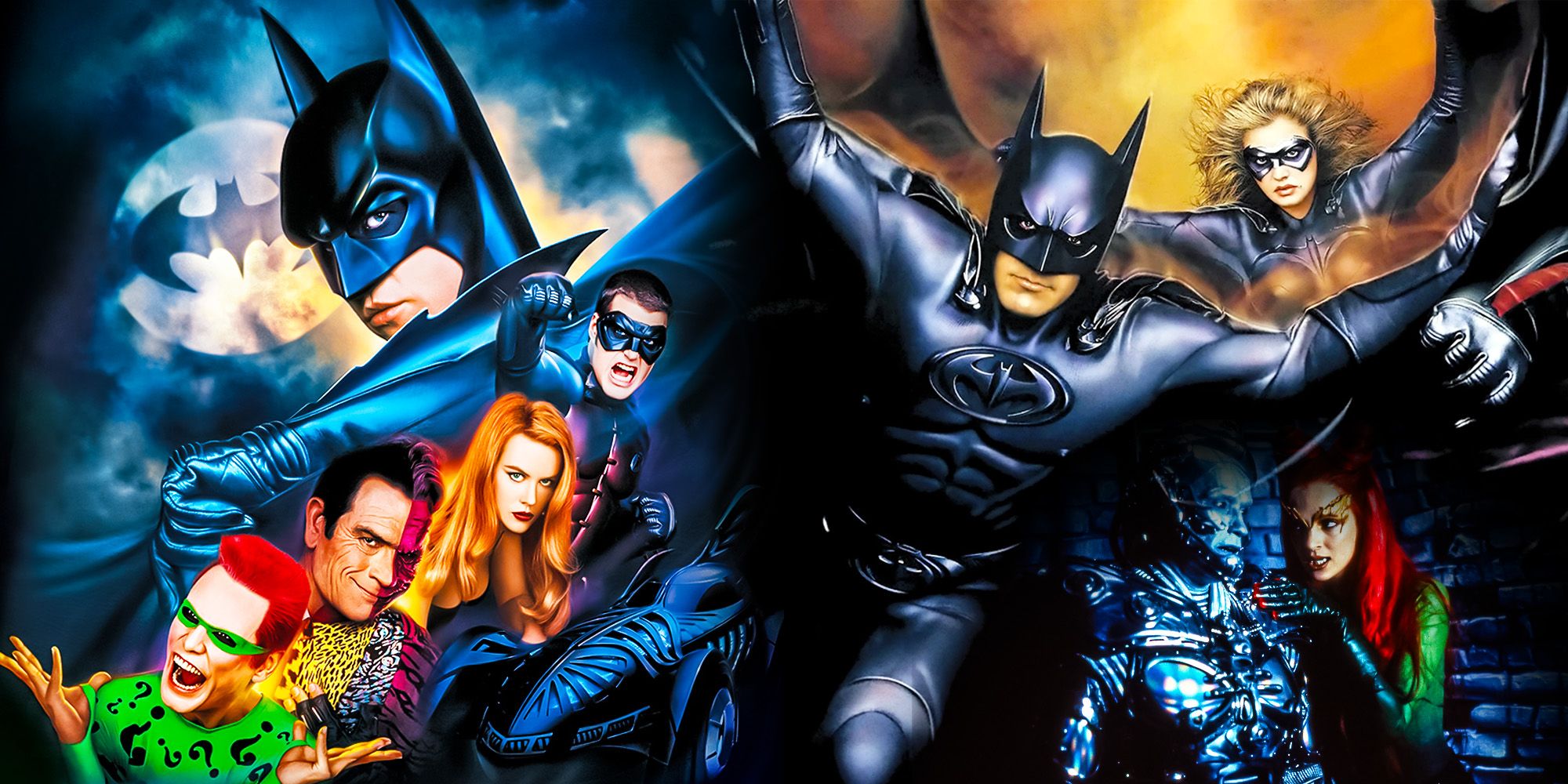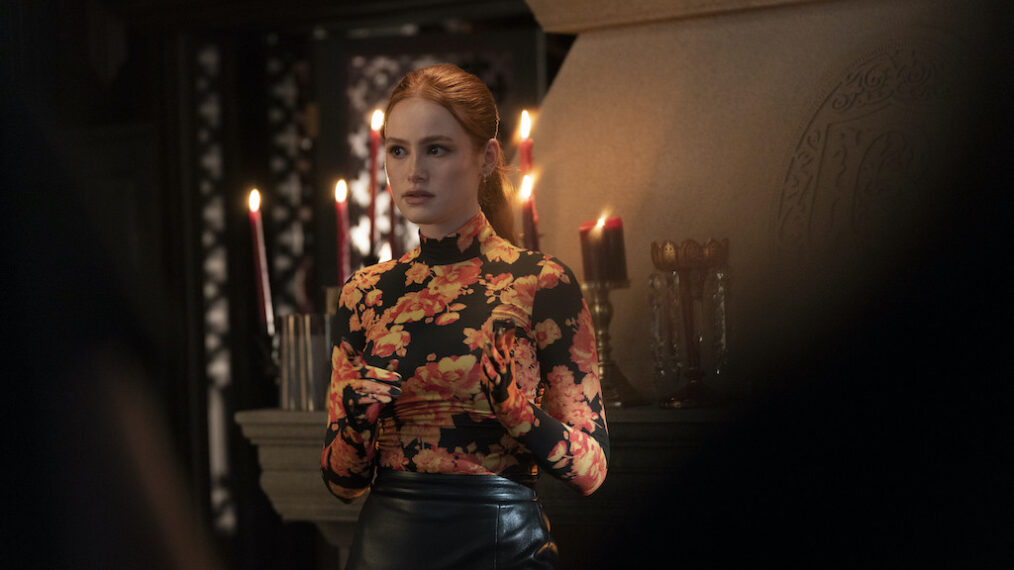Joel Schumacher’s two Batman movies have a poor reputation among superhero fans, but they’re not nearly as terrible as people say. Following the massive success of 1989’s Batman and the troublesome reaction to Batman Returns, Tim Burton didn’t return for a third Batman film, with Joel Schumacher being brought onto the Batman film franchise instead. Schumacher, who was far more familiar with the Batman comics than Burton, was tasked with repairing the decidedly not family-friendly image of the franchise following Batman Returns, and his two films, Batman Forever and Batman & Robin, were much more light-hearted than their predecessors. The films’ deliberate camp and cartoonish sensibilities resulted in an extremely negative reception among viewers, especially Batman fans, yet they were never truly as bad as people think.
1989’s Batman changed the superhero film genre, with a massive marketing campaign and a darker, more serious approach to depicting one of DC Comics’ most iconic superheroes. The film’s winning combination of Tim Burton’s expressionist aesthetic and iconic performances instantly turned Batman into WB’s most lucrative superhero property, so it wasn’t surprising that Burton was brought back for a sequel. To entice Burton to make another film, he was given far more creative control over Batman Returns than its predecessor, and while the film is deservedly appreciated by modern audiences, it was even darker and more violent than the 1989 film, leading to a backlash that necessitates a new direction for the Batman franchise.
Joel Schumacher, a lifelong Batman fan, initially sought to make a prequel based on Frank Miller’s Batman: Year One comics, which would have continued the dark and gritty style of Burton’s films. WB not only wished for a sequel, but a far more family-friendly installment, so Schumacher made films that aligned more closely with Silver Age Batman comics instead. Joel Schumacher apologized multiple times for disappointing fans with his second film in particular, and the more serious Batman Begins rebooted the franchise in 2005. However, Schumacher’s movies – despite their poor reputation – were accurate representations of the Batman comics, honoring parts of the Dark Knight’s history that modern adaptations continue to omit. Moreover, Batman Forever gave Bruce Wayne the best character arc in the four anthology films. While recent Batman adaptations seek to avoid resembling Schumacher’s films, Batman Forever and Batman & Robin are far better than their reputation suggests.
Joel Schumacher’s Batman Movies Were Comic Accurate
While Burton’s Batman movies were a close match to the early Golden Age Batman comics in terms of tone and aesthetic, the two films made numerous changes to the source material that viewers may have overlooked or hand-waved due to their understandable appreciation for the films. In addition to having Batman kill numerous enemies (something he’d do rarely and begrudgingly in Golden Age stories), Burton established Jack Napier – the future Joker – as the criminal who killed Bruce Wayne’s parents. The Penguin, who should be a crime lord hiding his brutality under the façade of a gentleman, was drastically reimagined as a vengeful former circus performer who was rejected by his parents for deformities.
Batman Forever, despite its reimagined version of The Riddler, was quite accurate in its depictions of Two-Face, a trend that continued with Batman & Robin‘s Mr. Freeze, and Poison Ivy. Two-Face’s origin and over-the-top demeanor closely resemble his early 1940s comic counterpart, and Dick Grayson’s more vengeful Robin origin in Batman Forever was a faithful adaptation of Batman: Year Three. While Mr. Freeze’s backstory in Batman & Robin is more inspired by Batman: The Animated Series than the comics, his ice-stealing crimes, and knack for cold-temperature puns from his Silver Age comic appearances were replicated. Poison Ivy is similarly accurate to her Silver Age comic counterpart, though the inclusion of Jason Woodrue takes loose inspiration from Neil Gaiman’s Black Orchid miniseries. While Bane hardly resembles his comic counterpart, he’s quite similar to Poison Ivy’s obscure henchman, Evan, who eventually gains super strength from Ivy via an experimental formula.
Batman’s Intentional Camp
What many Batman fans often forget is that the Batman multimedia mythos has been around for over eighty years and is easily the most malleable in the superhero genre. While Batman and his stories are typically seen as dark and violent, they’ve been lighthearted and goofy almost as often. The Batman comics of the later Golden Age and almost the entirety of the Silver Age took a drastic turn from their previously-gritty detective fiction tales.
This was reflected perfectly in the classic Batman TV series starring Adam West and Burt Ward, which was intentionally and unapologetically campy in its depictions of Batman characters and stories, resulting in a show that fairly accurately represented the comics of the 1960s. Joel Schumacher made the right choice to draw inspiration from both Silver Age Batman stories and the classic TV show in his movies, as the result was a pair of family-friendly films that pleased WB while honoring the Batman comics (though not the Batman comics that most viewers wanted at the time).
Batman’s Best Anthology Arc
Regardless of the deliberate camp in Schumacher’s films, Batman Forever gave Batman the best character arc of all four anthology movies. While Burton’s films are set in “Earth-89” and Schumacher’s in “Earth-97,” Batman’s characterization in Forever is meant to continue where he left off in Returns. Fittingly, Batman begins to reconcile his two identities after two films of being a tortured vigilante who feels compelled to avenge his parents. By the end of Batman Forever, Batman tells The Riddler “I’m both Bruce Wayne and Batman. Not because I have to be. Now because I choose to be.” This is not only the most substantial character growth that Batman undergoes in the Batman anthology films, but it’s also the most uplifting.
Schumacher Built the Batman Family
A key element of Batman’s comic counterpart, especially in more recent stories, is that he is the leader of a team of vigilantes. Less than a year after he debuted, Batman was joined by his adopted son, Dick Grayson, a.k.a. Robin. Over time, the so-called “Bat-Family” included Alfred Pennyworth, Batgirl, and numerous new holders of the Robin and Batgirl mantles. Batman works alone in most film franchises (in the case of the DCEU, due to Robin’s death), but Schumacher’s movies embraced this side of the comics, making Dick Grayson’s Robin origin a major plotline in Batman Forever and ending Batman & Robin with Batgirl turning the duo into a trio. Despite the camp and irreverence of Joel Schumacher’s Batman films, they were made to represent a lighter side of the mythos, which they did excellently.
About The Author



























































